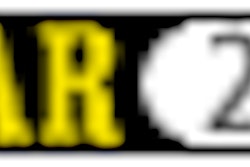
CLEVELAND - Advances in imaging technology are a powerful force spurring the adoption of PACS technology, and the trend shows no signs of abating. At the same time, the relentless pace of technological improvement creates ongoing challenges for planning and implementing PACS networks, said Robert Gould, ScD, professor of radiology and bioengineering at the University of California, San Francisco.
"PACS and developments in imaging technologies are symbiotic," Gould said. "You can't really separate the ability to display images from the ability to capture them, because as you develop better display techniques, there's also the development of better capture techniques. And that's going to continue." Gould spoke Friday during a SCAR University session on new developments in imaging technologies at the Symposium for Computer Applications in Radiology.
For example, multislice CT technology continues to advance, with 16-slice scanners becoming available later this year. Shorter rotation times and more slices per tube rotation are leading to expanding use of CT angiography and greater use of volume rendering techniques (such as in virtual colonoscopy), Gould said.
"The PACS has to be prepared to store these volume-rendered mages," he said. "The impact on PACS is very substantial."
The impact of digital radiography on PACS is equivalent to computed radiography in most cases, producing images with a 2,048 x 2,048 pixel matrix and an image size of 6 Mbytes to 8 Mbytes. An expensive technology, DR requires higher patient throughput to be cost-justified, he said.
That means a high level of integration with PACS and RIS; the DICOM modality worklist must be supported, he said. X-ray technique factors should be automatically set based on information obtained from the RIS. Automated image processing features also need to be configured, such as speedy application of body part-specific image processing, Gould said.
As it stands now, digital mammography is not well-suited to PACS, Gould said.
"There can be a huge amount of data per image, making rapid retrieval and display difficult," he said. "And no softcopy display is capable of presenting the entire image at full resolution."
Soft-copy viewing of full-field digital mammography systems requires "specialty" display products that are not part of PACS product lines, Gould said. Today, digital mammography requires a mini-PACS approach, operating in an isolated PACS network, he said.
Angiography has largely been left behind by the PACS revolution. Despite the near extinction of film-based angiography, angiographic data is rarely included in PACS networks, owing to the hefty amount of data (greater than 500 Mbytes for biplane angiography) generated by these studies and the need for subtraction and pixel-shifting not commonly available on PACS displays.
"However, if you think about it, (angiography and PACS) are a perfect match," he said. "The best way to look at angiography is in a dynamic fashion, not on a piece of film.
One possible solution to this problem is to deploy an intermediate workstation between the angiographic equipment and the PACS network. The workstation would perform steps such as subtractions, reduce motion artifacts, apply edge enhancement, and/or smoothing filters, and cull unneeded images before sending on to the PACS, Gould said.
Successful integration with PACS would ultimately facilitate rotational angiography procedures. By its nature, rotational angiography procedures would have to be read via soft-copy, Gould said.
In the future, angiography will be incorporated into PACS, and PACS displays will include appropriate processing features necessary to handle these studies, Gould said. Also on the horizon: large-area flat-panel detectors, although this could be more than three years away, he said.
Ultrasound is another modality that's increasingly challenging for PACS designers and implementers. With recent inclusion of dynamic clips, a one-second, 30-image loop of 512 x 512 pixel, 24-bit images produce approximately 24 Mbytes of data, Gould said. The ability to use color, which requires different display requirements than traditional grayscale images, is also important.
Advances in imaging capture devices will undoubtedly keep pace with development of PACS technology, Gould concluded.
"Demand for new technology is unrelenting," he said. "Improvements in storage capacity and network speed are vital to the success of PACS. PACS can't be static. You've got to change with the changing imaging technology. And workflow management becomes very critical."
By Erik L. RidleyAuntMinnie.com staff writers
May 4, 2002
Copyright © 2002 AuntMinnie.com

















